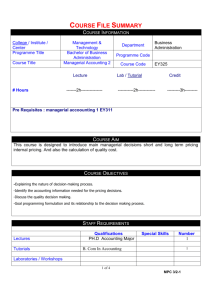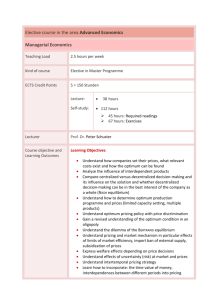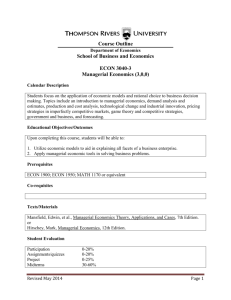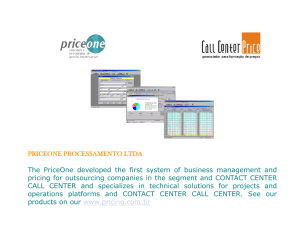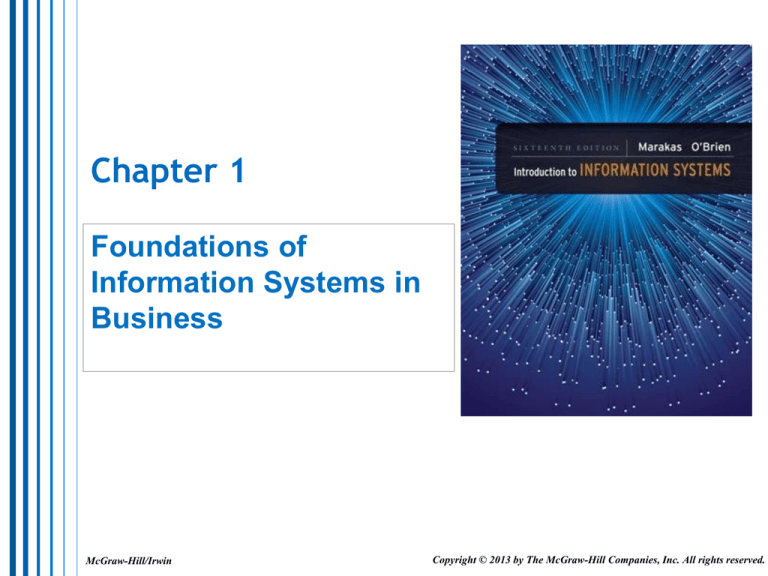
Chapter 1
Foundations of
Information Systems in
Business
McGraw-Hill/Irwin
Copyright © 2013 by The McGraw-Hill Companies, Inc. All rights reserved.
Learning Objectives
Understand the concept of a system
and how it relates to information
systems.
Explain why knowledge of information
systems is important for business
professionals, and identify five areas
of information systems knowledge that
they need.
1-2
Learning Objectives
Give examples to illustrate how the
business applications of information
systems can support a firm’s business
processes, managerial decision
making, and strategies for competitive
advantage.
Provide examples of several major
types of information systems from
your experiences with business
organizations in the real world.
1-3
Learning Objectives
Identify several challenges that a business
manager might face in managing the successful
and ethical development and use of information
technology in a business.
Provide examples of the components of real
world information systems. Illustrate that in an
information system, people use hardware,
software, data, and networks as resources to
perform input, processing, output, storage, and
control activities that transform data resources
into information products.
Demonstrate familiarity with the myriad of career
opportunities in information systems.
1-4
Section 1
Foundation Concepts:
Information Systems in Business
1-5
I. The Real World of Information Systems
Information Systems are an essential
field in the study of business
administration and management.
IS and IT and Internet technologies
play vital roles in business and
improve the effectiveness and
efficiency of business processes,
managerial decision making, and
workgroup collaboration.
1-6
II. The Fundamental Roles of IS in Business
Support of Strategies for Competitive
Advantage
Support of Business Decision Making
Support of Business Processes and
Operations
1-7
IV. The Role of e-Business in Business
E-Business – use of Internet technologies to
empower business processes, e-commerce,
and enterprise collaboration within a firm and
its customers, suppliers, and stakeholders
Enterprise Collaboration Systems – support
communication, coordination, and
collaboration among networked
teams/workgroups
E-Commerce – buying, selling, marketing,
and servicing products, services, and
information over computer networks
1-8
VI. Managerial Challenges of Information Technology
The IS Function
IS is a major functional area of business, just as
important as any business function
IS is an important contributor to operational
efficiency, employee productivity and morale, and
customer services and satisfaction
IS is an important strategic resource
1-9
Section 2
Foundation Concepts:
The Components of Information Systems
1-10
I. System Concepts: The Foundation for Business
Processes
What Is a System?
Input – capture the data to be processed
Processing – change the data into information
Output – disseminate the information product to its
destination
Feedback and Control
Feedback – data about the performance of the
system
Control – monitoring the feedback to determine if
the system is meeting its objectives
1-11
III. Information System Resources
People Resources
IS Specialists
End Users
Hardware Resources
Machines – the computing devices
themselves
Media – where data is stored
1-12
III. Information System Resources
Software Resources
Programs – instructions that tell the
computer what to do
System Software – runs the computer
Application Software – a particular use by end
users
Procedures – instructions on how to use
the system
1-13
III. Information System Resources
Data Resources
Data – unorganized facts and figures
Information – data organized so that it has
value to the organization
Network Resources
Communications Media- the physical
pathways over which signals travel
Network Infrastructure – hardware,
software, and data technologies needed to
support communications networks
1-14
IV. Information System Activities
Input of Data Resources
Processing of Data into Information –
organize, analyze, and manipulate data
Output of Information Products –
dissemination of information products to
appropriate end users
Storage of Data Resources
Control of System Resources –
monitoring feedback to assure the system
meets its performance standards
1-15
Operation issue
RWC 1. eCourier, Cablecom, and Bryan Cave: Delivering Value through Business Intelligence
The company needed to provide
better services to their customers
to make them happier
2000packs/
A day around
London
Operational business Intelligence allows the
company to keep real-time tabs on customer
satisfaction
Giving their couriers a
GPS-enabled handhelds
The couriers can be
tracked and orders can be
communicated
electronically
Phone
Dis
Patch
ers
They also focused on
making online booking
easy and rewarding
And much was invested in
user-friendly applications
Account managers could
miss the same issues that
plagued other courier
services
Late deliveries
Surly couriers
Unnoticed ramp-up in
deliveries
Using a software, SeeWhy
When a new booking enters eCourier’s database the
information is duplicated and saved into a repository within
SeeWhy.
The software then interprets the data by comparing it with
previous information and trends, and if it notices an
anomaly, it takes action
If a customer typically places an eCourrier order every
Thursday morning between 9:00 and 10 and there’s been
no contact during that time, eCourier’s CRM team will
receive an alert shortly after 10 that includes the client’s
history and the number of bookings it typically places in a
day
These capabilities have provided a big payoff.
The system saves the expense of having to hire people to
monitor for “who’s happy and who’s not – we’re able to do
a lot more on our customer team with a lot less”
1-16
Fee issue
Clients were demanding
alternatives to the traditional
hourly fee structure.
Making the most money with your resources while
simultaneously delivering the highest customer
value with BI
New pricing models, such as
fixed pricing and pricing that
was adjusted during a project
To be in touch with clients using Business
Intelligence
It required the complicated
balance of staffing and pricing.
Both profitability and hours leveraged ( the hours worked by
equity partners and all other fee earners at the firm) have
increased substantially
It also allow lawyers to track budgets in real time so they can
quickly make adjustments.
It even provide a diversity dashboard, which tracks the hourly
mix of women and minorities working on the firm’s cases, a
feature the company will license to Redwood Analytics for
sale to other law firms. The firm developed this diversity tool
to bring transparency to the diversity reporting process
required by many clients.
(e.g.) The customized pricing one lawyer gave to his real
estate client. Developers think in terms of square feet and this
client couldn’t understand why legal fees for a 400,000square-foot building might be the same as legal fees for a
4000-square-foot building, even though it required the same
amount of the lawyer’s time. So the lawyer used the pricing
and staffing modeling tools and historical analysis tools to
determine whether it made sense for the law firm to charge
clients based on the size of their projects. While there was
risk of underpricing large buildings, the deal volume in small
buildings offset that risk for the law firm. The result made persquare-foot pricing possible.
Projects weighted too heavily
with a law partner’s time would
be expensive ( for the law firm)
and not optimized for profit.
Spread
sheet
Devoting too little of a partner’s
time would leave clients feeling
undervalued.
Optimizing profit and perceived
value had to be achieved by
spreading partners’ time
throughout a number of cases
and balancing the remaining
resources needed for a case
with the less-expensive fees of
associates and paralegals.
1-17
1-18
RWC 2. The New York Times and Boston Scientific :
Two Different Ways of Innovating with Information
Technology
1-19



